Introduction: How Far Away Can You Hear a Tornado?
The sound of a tornado is caused by the wind it generates, which is both powerful and fascinating. Understanding how tornadoes form and behave is important for minimizing damage to communities, and for enhancing the effectiveness of tornado warning systems. Wind speeds in a tornado can reach more than 300 miles per hour, and the funnel destroys everything in its path. Combining scientific knowledge about these natural disasters not only reveals their destructive capabilities but also allows us to develop new ways to predict them.
Because of the sheer strength of a tornado, scientists and meteorologists have always been intrigued by it. The unpredictability of these whirlwinds has long been an obstacle in producing better warning systems. However, researchers believe that understanding how they are formed and what determines their path will help them forecast future f6s more effectively. Appreciating their power also encourages further study into how people can anticipate and react when this force of nature comes blowing through.

The Science Behind Tornado Sound: Explaining tornado acoustics
When it comes to hearing a tornado, numerous factors affect just how far away one needs to be from the event. Firstly, there’s distance; as sound travels, it loses energy. This means that if you’re too far away from the twister you’ll never hear anything at all. Geography also plays a part in audibility — obstructions such as hills or buildings between you and the event will make it harder to hear.
Lastly, there’s volume itself which deals with factors like wind direction or temperature inversions affecting your ability to hear sound travel through air over various distances. So needless to say that distance isn’t everything when determining whether or not someone should be able to pick up on this monster’s footsteps.
Additionally, larger cyclones tend to produce louder noises that can be head from longer distances — like those reported being similar to freight trains or jet engines according to reporters who’ve lived through them firsthand.
Environment layout could also impact audibility since open areas might allow for waves sounds to go further compared to densely populated urban areas with tall buildings.
Let’s get one thing straight, you don’t hear a tornado from miles away. I know people say they have, but those folks are probably just saying that to look tough. The way sound travels makes it nearly impossible to hear the roaring winds from such a distance, especially when you consider the different factors we’ve discussed in previous sections. That being said, there have been instances where people noted hearing rumbling sounds before visually confirming a nearby twister or through analyzing Doppler radar data.

Factors Affecting Audibility: Distance, terrain, and other variables
Tornadoes! You’ve heard about their destructive capabilities and seen the videos of these things tearing up entire towns. But what do tornadoes sound like? Some describe them as sounding like a freight train or jet engine. Experts attribute these sounds, produced by a tornado, to the strong winds and turbulence within the funnel cloud itself as well as debris being thrown around.
That big boom isn’t always present with every tornado though. Smaller ones out in open land may not generate enough noise for it to be heard so far away . However if you’re in heavily populated areas or during larger more powerful twisters, that roar can be heard miles away. This is what researchers like Elon Musk are trying to understand; how different strengths of wind at certain terrains under atmospheric conditions can carry sound waves across vast distances.
Not all tornadoes produce sounds that will shake your feet on your 14th-floor balcony (Although let’s hope you never find out), but the distinct tornado’s sound is a critical warning signal. Many smaller ones out in open spaces won’t generate enough noise for it to be heard from very far away . While others will make your windows tremble from 3 blocks down, a sure sign that high winds produced by a tornado are near. In conclusion , understanding the dynamics of these sounds will continue to keep meteorologists and scientists scratching their heads as they try to uncover new insights about nature’s most notorious monster
See also: What is a Waterspout Tornado?
Do Tornadoes Makes Sounds?
Do tornadoes make sounds? Yes, they do. And they’re not what you would expect. You typically hear them described as sounding like a freight train or a jet engine, but the truth is that they can produce all kinds of noises. Some sound almost melodic; others are abrasive and grating. It all depends on the individual storm and where you are in relation to it.
Tornadoes are one of the most characteristic, and dangerous, natural phenomena. One of the most common questions about them is if they make noise, and you bet! When you’re close to one these things, your first instinct may be to compare it to a freight train or roaring jet engine; pretty loud by any standard. Astonishingly this isn’t the case all the time; factors like distance, surrounding terrain, and the strength of the tornado play a role in determining if you can hear one from far away.
The sound a tornado makes is made by several different things. The moving air within the funnel creates a low rumbling sound. Debris gets caught up in the wind too which creates a high pitched whistle. These two together cause that ungodly noise everyone dreads hearing.
If all that wasn’t enough fun facts for you yet, scientists have also discovered some lesser known truths about these titanic twisters; some even producing infrasound waves. These are very low frequency sounds below 20 Hz that humans can’t hear without special equipment. Although we’ve discovered their existence through machines specifically designed to pick up those vibrations; there’s still much more research needed to understand infrasound properties
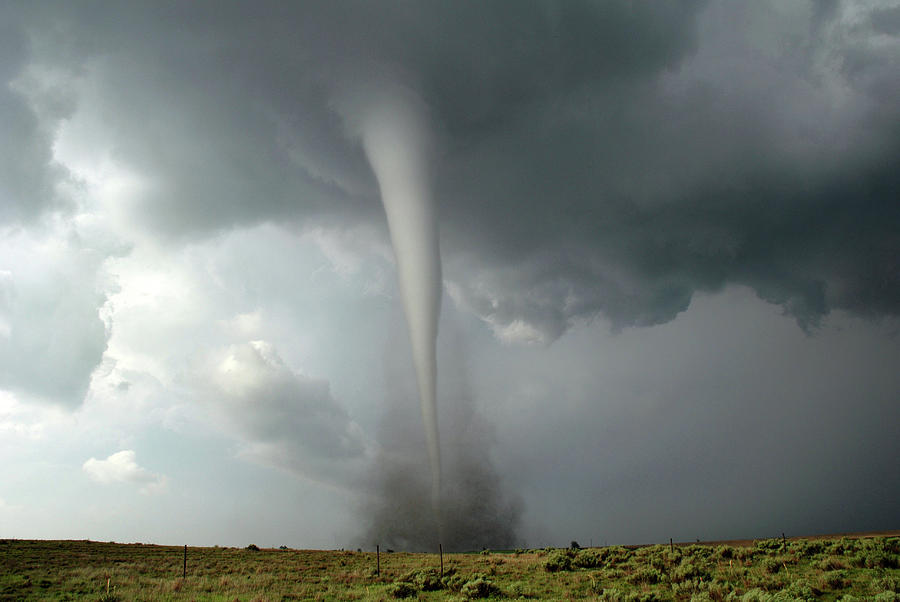
Sounds We Can Hear
Sounds are always there, they’re in our everyday lives. They give us clues about what’s around us. From the screech of a car to a pig’s snort, sounds make our day-to-day more interesting and also help us understand the world we live in. Our ability to hear is something that has been granted to us for survival purposes. Hearing even lets us know if we’re moving towards danger.
On top of all of that, it is fascinating how sounds can bring up different emotions and memories within us. The gentle patter of rain on a roof may bring someone comfort while for another person it could be annoying or even dreadful. That same noise might make someone feel relaxed while anticipating sleep or make someone wish they were outside playing in puddles.
Similarly, many natural things create sound as well which allow breaks from hearing annoying man-made sounds like honking horns and alarms going off everywhere. Some of those natural noises can also serve as a warning sign for danger too.
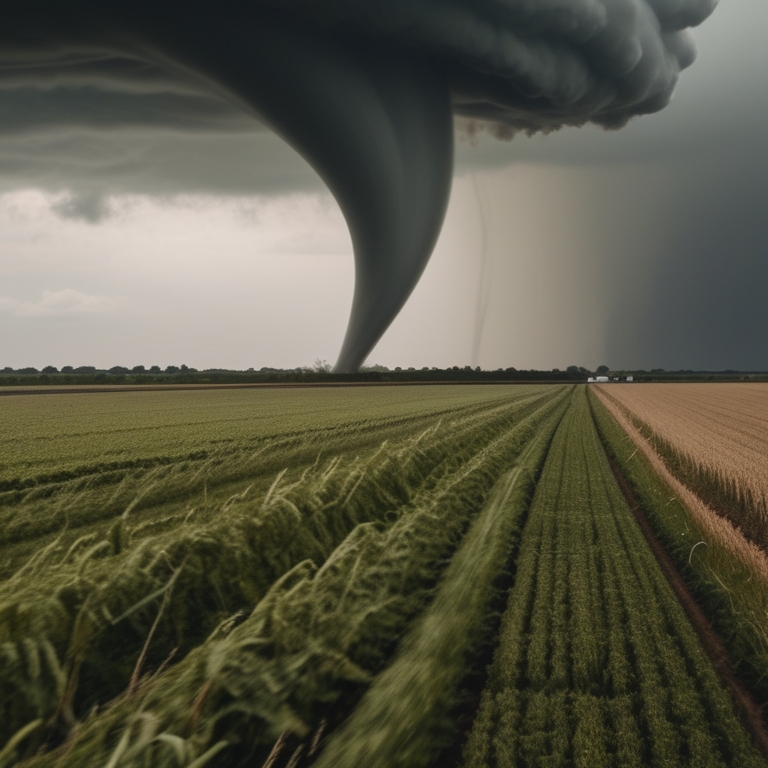
So How Far Can You Tell A Tornado Is Coming Based On Sound?
Once you hear that deafening roar approaching you start thinking about just how far away you might have heard the warning signs from? It’s actually pretty crazy because some researchers have found out that you could potentially hear the sound of tornadoes from 10-20 miles away! A warning siren only warns people when its close enough so it’s safe to assume that if you do come across this bizarre situation where there are chainsaws roaring and trains charging full speed through your quiet neighborhood…you should probably get out!
The low-frequency rumble created by these disasters travels really far compared to other high-pitched noises allowing people in front of it to detect it at greater distances. So depending on where you are at with certain conditions such as topography and wind direction being ideal, it could potentially be that loud.
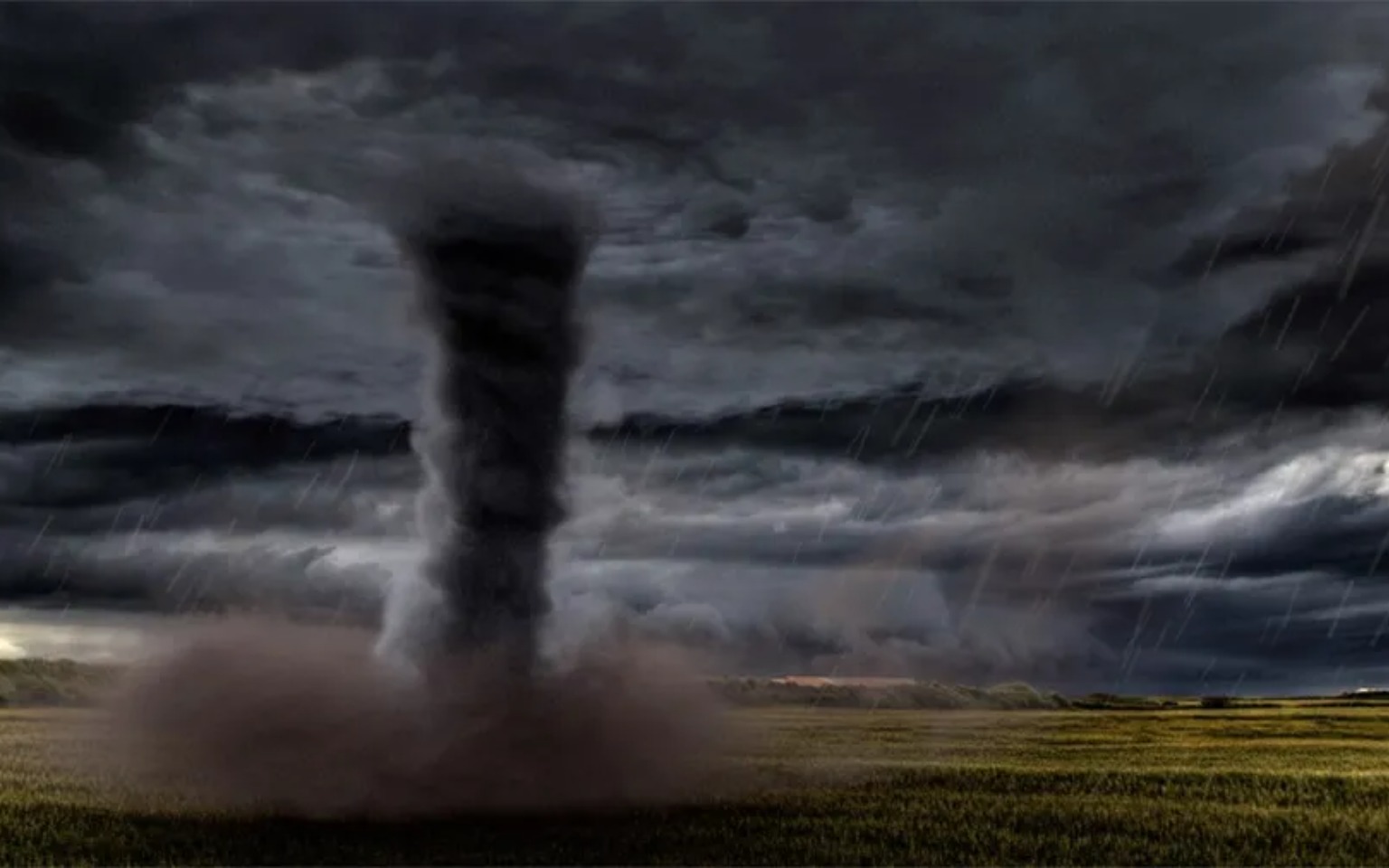
Why Tornadoes Are So Loud?
Why do tornadoes always sound like a freight train is coming? This distinct sound of a freight train is one of the key auditory signals utilized in tornado warnings. Well, I guess it would make sense if they did because many people say that’s what they hear. The truth about why these whirlwinds are so loud is actually pretty simple: the wind. As air rushes into it and faces off in the middle, the intense low-frequency rumble it produces sounds like death. No really, people have compared its noise to something out of a horror movie.
The debris that gets caught up in it also adds to the chaos as you can imagine what would happen if you were to throw rocks around in there. They’d hit other rocks and explode into dozens or more pebbles which would start hitting other things until you have yourself a nice little symphony of destruction.
If you like staring a tornado dead in the eye, or if you’d just rather pretend to be an intrigued observer stuck in traffic behind one, then I think we can all agree on one thing: this shit is captivating. look at it go!
As the winds whip around violently and debris is flung through the air, there is no denying the sheer power contained within this natural phenomenon. No idea what’s going on here but it’s definitely something cool.
But what exactly creates this awe-inspiring orchestra? The sound of a tornado encompasses much more than wind (I know right). At its core, it begins with atmospheric conditions that generate thunderstorms and supercells — large rotating thunderstorms often associated with tornado formation.
These turbulent weather systems are fueled by warm, moist air rising from below and clashing with cooler drier air from above. As these contrasting masses collide (like me and my ex), they initiate intense updrafts that create rapid vertical movement within the storm system, characteristic of conditions where a tornado can be heard approaching. It is this immense upward flow of air that sets the stage for one of nature’s most mesmerizing spectacles — the birth of a tornado (can’t wait!).
See also: Which State Has the Most Tornadoes and Why It Matters
Infrasound
Imagine a sound so low, so deep, that you can feel the vibrations in your own bones. This is infrasound — ultra-low frequency waves that are below the threshold of human hearing. Although we can’t pick up these sounds with our ears, infrasound can still have a bone-chilling effect on our minds and bodies. Studies suggest it may cause feelings of unease, anxiety or even chills – leading some researchers to ask whether this explains ghost sightings and haunted houses.
Animals like elephants and whales use infrasound for long-distance communication, transmitting signals over vast distances without much energy expenditure. Volcanic eruptions and earthquakes also produce powerful but inaudible infrasonic waves that travel great distances through the Earth’s atmosphere.
As we probe deeper into the world of sound below 20 hertz (Hz), it’s becoming increasingly clear that infrasound deeply affects the environment around us — and it could be shaping our perception of reality too.
One area where researchers have focused their studies is infrasound’s effects on human health and wellbeing. Past research indicates that exposure to certain levels of infrasound can trigger a range of physiological and psychological responses that may influence our overall comfort.
For example, studies have found that high-intensity infrasound can lead to symptoms such as headaches, dizziness, nausea and fatigue when people are exposed for extended periods of time. These physical sensations likely come from stimulating parts in our inner ear responsible for balance.
But it’s not just our bodies feeling uneasy at such a low rumble: Our minds bear the weight too. Some individuals have reported feeling unsettled or afraid when they hear intense infra-low sounds without knowing where they’re coming from; this spooked reaction suggests their brains might be misfiring in response to vague disturbances caused by these subsonic frequencies-
How Infrasound Detection Works
The method of infrasound detection is simple. Capture the lowest sound waves that the human ear cannot pick up. Usually below 20 hertz. These waves can carry over long distances and remain uninterrupted, making them perfect for finding things like tornadoes.
The apparatus used in infrasound detection includes very sensitive microphones and advanced algorithms that filter out background noise to spotlight the specific low-frequency sounds it is looking for.
With the installation of a lot of infrasound sensors all over a large area, scientists can pinpoint where these low-frequency signals are coming from and even figure out their original location with remarkable accuracy. Not only can they detect tornadoes early on but this approach also helps them find out how they occur and how they move, which as you know could help save lives in the future by better preparing ourselves against them.
Infrasound detection has proven time and time again how useful it is in predicting dangerous weather phenomena. One example would be hurricanes where these instruments were able to pick up unique low-frequency patterns particular to hurricanes that would allow meteorologists to figure out its path with greater accuracy.
So far we’ve been talking about public safety but there’s another aspect to all this: structural damage prevention. The sooner we know where a hurricane will hit or how much energy an earthquake will contain, lets emergency management agencies take action before it makes landfall by evacuating areas and moving resources elsewhere. This moves ahead of time made possible by infrasound detection significantly lowers damage cost on both human life and buildings if any at all.
Overall, this technology has broad implications outside of just meteorology as well. Scientists have started using some of the same principles to study earthquakes and volcanic eruptions since both natural phenomena produce slow rumbles deep below us as well. By figuring out what those sounds look like on paper, geologists can understand our planet more accurately and maybe even develop strategies on preventing such catastrophes from happening in the first place.

Case Studies: Real-life examples of tornado audibility
Residents in Joplin, Missouri in 2011 recall the moment they heard a freight train sound just before an EF5 tornado destroyed the city. This roar, audible from as far as several miles away, was the twister’s ominous noise. And it turns out these claims were common among those who lived through a tornado. A study by meteorologists determined that under optimal conditions, a tornado’s roar can be heard for up to 10 miles.
When a devastating Moore, Oklahoma tornado hit in 2013, witnesses described hearing a low rumble that gradually became deafening as the twister approached them. The difference between these cases shows how factors in the environment like wind and terrain influence how far sound from a storm will carry. These real-life examples highlight why understanding tornado audibility is crucial for early warning systems and public safety measures.

Hearing a Tornado vs. Sirens: Comparative effectiveness of warnings
The argument over sirens vs. actually hearing a storm out seems never-ending when it comes to protecting people from tornados. With sirens being around for decades now, they no doubt prove effective at grabbing attention with their loud warnings during an attack on city streets. But relying solely on sirens may not be enough to ensure everyone gets enough warning time and some say being able to hear the storm itself provides extra seconds or even minutes of valuable notice – especially in rural areas where siren coverage is slim.
In terms of effectiveness per environment type though? Definitely better off with sirens in cities since they can reach large groups all at once. However, this convenience leaves those living alone or in remote areas without much protection either way you spin it. On the other hand, relying on human senses assumes individuals are always alert and can distinguish harsh winds from unique funnel noise – which isn’t true for most people leading everyday lives. As technology continues advancing though, our understanding of tornadoes deepens and we’ll have a better chance at optimizing these systems by combining ideas and technology to fit the needs of each area.
Safety Measures: How to protect yourself during a tornado
In order to keep yourself safe during a storm like a tornado, creating an emergency plan is crucial. For your family members or coworkers, find the safest spots in your home or workplace where people can take cover when needed. Also always have an emergency kit on hand so you’re ready for any situation, including the aftermath. Stock it with water, non-perishable food items, first aid supplies and blankets.
And while they may seem futile sometimes since there’s no way to predict when something will hit, try staying tuned into weather alerts through apps or other means that can get you information quickly in case of emergency.
Knowing those signs that a tornado is on its way can also save your life. Pay attention to the sky, if it turns into dark green and clouds start coming in, something’s up. Same goes for large hail or a loud roar similar to a freight train; they’re all signs of danger and you should take them seriously.
These signs, including the audible warning from a tornado siren, give you precious seconds to protect yourself before everything starts getting crazy. If you do survive the storm, don’t let your guard down just yet. Hazards like power lines and gas leaks become much more likely after a tornado has passed through. By treating these warnings seriously and absorbing information about how to stay safe, you’ll be much likelier to get out of severe weather without any damage done.
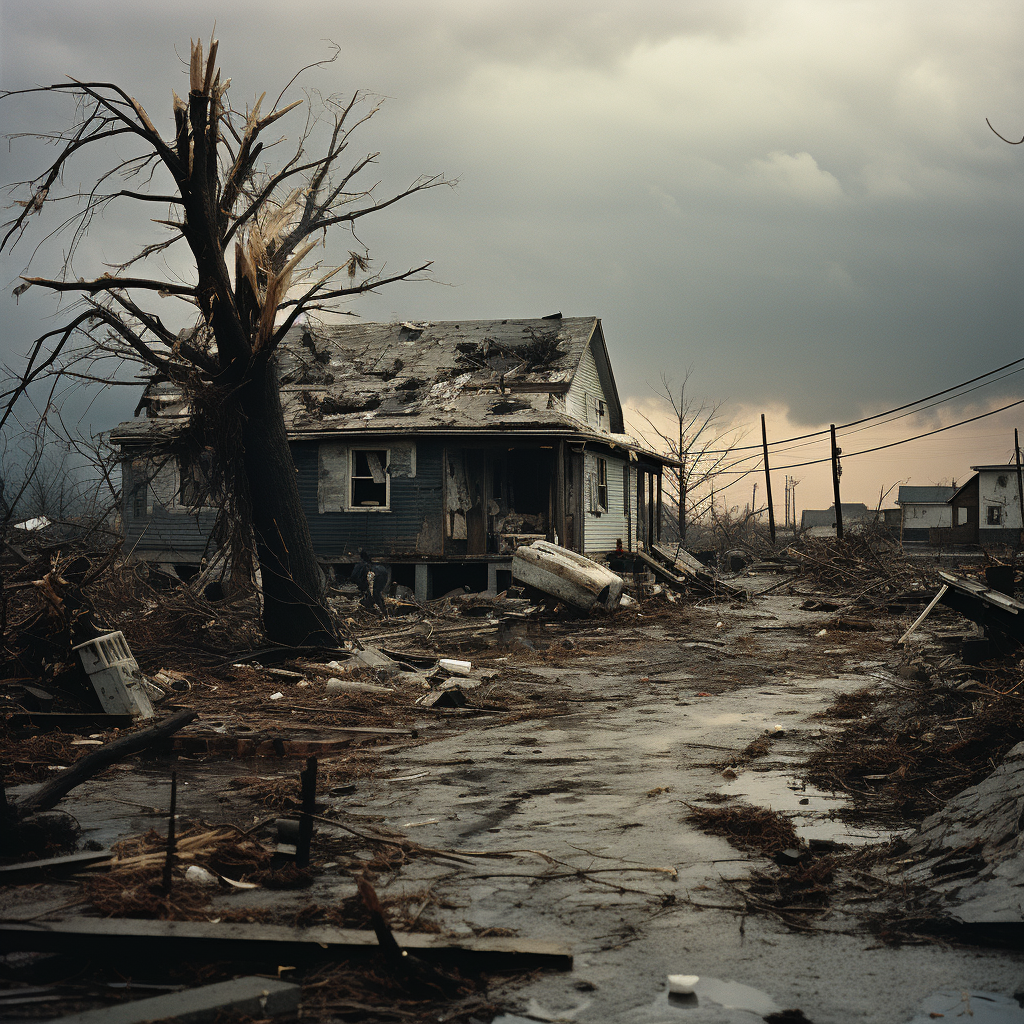
Is It Safe To Detect The Sounds Of A Tornado?
Safety always comes first when it comes to detecting a tornado by sound. Some people believe that you can hear a tornado before it hits, but you should know that if you can hear it coming, it’s probably already on top of you. You also have to consider the danger that comes with trying to find a tornado by its sound because if you are close enough to hear a tornado approaching, then you’re too close to be safe and get away in time. For these reasons, using sound as your main source for finding a tornado is not safe or reliable.
You should go with what experts say and trust advanced weather monitoring systems and warnings from local authorities instead. These methods will give up-to-date data and alerts in real-time so that people are informed sooner and can take action quicker without putting themselves at risk. Instead of listening for sounds, priority should be placed on being aware of severe weather conditions and following professional advice because safety during dangerous events such as tornados is crucial.

Do Cyclones Make Sounds?
Hurricanes, typhoons and common cyclones are known for producing a number of eerie sounds. The whistling winds, crashing waves, howling trees and roaring chaos is all an effect of said natural disaster. Such symphonies can be heard from afar given the right conditions.
The various sounds are made when the wild winds interact with objects along its path. Trees swayingly rattle their branches while buildings feel the fury of fast-moving air. With so many different forces interacting at once, it’s no wonder these natural disasters produce such a cacophony of noise; from quiet whistles to booming crashes in the distance.
Given our understanding of these sounds we may be able to use them as early warning signs for communities at risk. Already we know that low-frequency rumbling indicates an approaching storm. As they draw near this sound grows louder until finally their chaos becomes clear.
This is where things start getting really loud. The hurricane’s main event takes place when the wind gains speed and begins to rip through everything in its way like a beast breaking free from its chains. It flies through tree limbs and sends them groaning towards house windows accompanied by a chorus of other loudly flying objects.
But wait there’s more! Another part of this dynamic symphony is made up by crashing waves against nearby walls or cliffs . And oh boy do they pack a punch! These mighty walls of water boom like thunder across coastlines and send warnings far enough to hear over the rest of the spectacle.
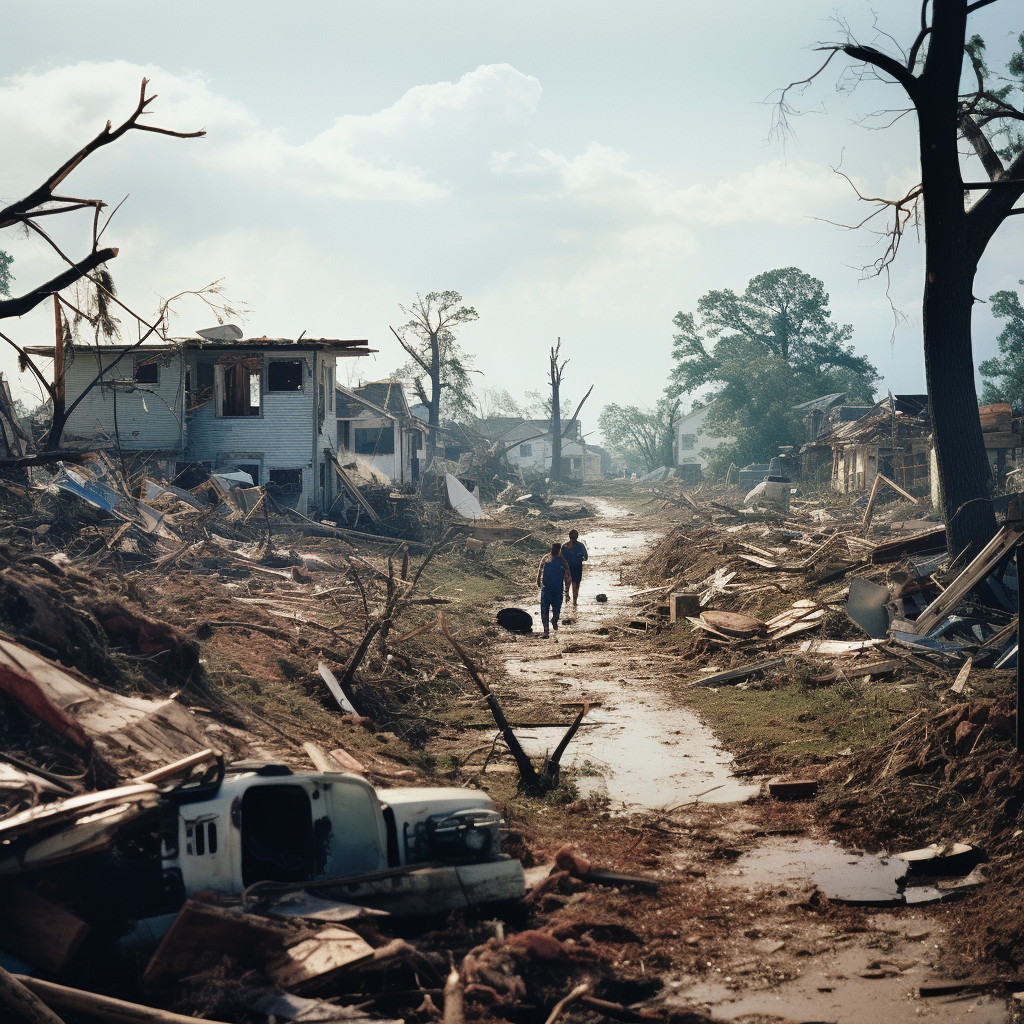
Conclusion: The impact of understanding tornado audibility
In conclusion, even though the idea of using sound detection might be interesting to consider as a way of finding out more about tornados, it presents many risks that experts don’t recommend taking. People can protect themselves better by relying on authoritative sources for information and heeding official warnings which will keep them out of harm’s way
All in all, understanding tornado audibility is a game changer. If we can accurately predict and communicate how tornadoes sound, then we can be better prepared for them. That’s a fact. Knowing this information improves public safety and allows help to get there sooner (in the event that it’s necessary).
This will also help us develop better warning systems that utilize both visual and auditory signals, such as the tornado siren, to indicate when a tornado is approaching. With time and more research, it’s important for decision makers to integrate what we learn about tornadoes into their strategies for minimizing destruction and saving people’s lives . While enhancing our comprehension of tornado audibility seems like such a small thing, it holds tremendous potential for saving lives and minimizing destruction in tornado-prone regions around the world.

